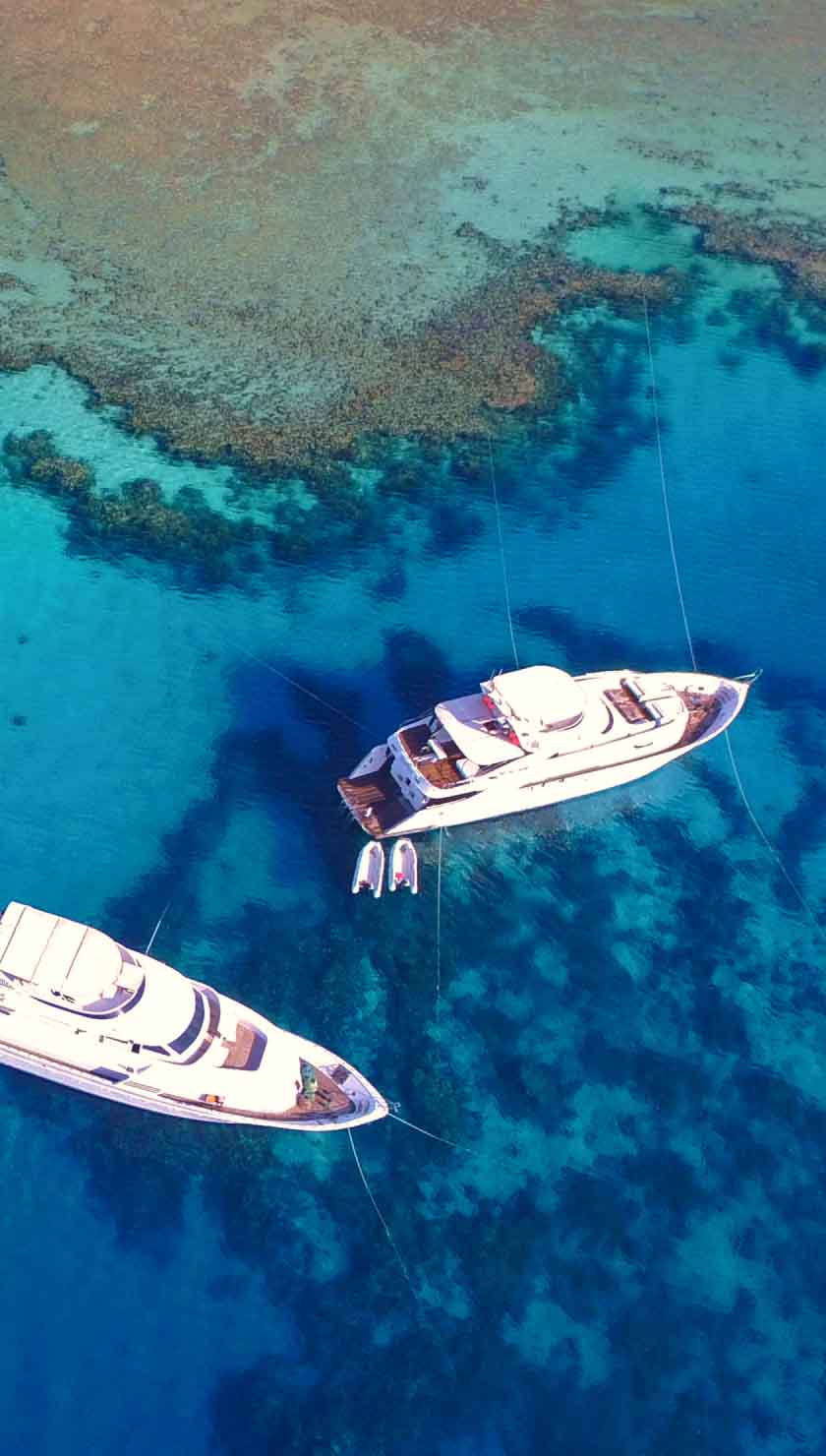Liveaboard Diving in Coron
What To Expect On A Coron Liveaboard
A Coron liveaboard will be the stuff dreams are made of for all keen wreck divers. This island in the Calamian group off Northern Palawan, Philippines, made history during World War Two as the site of a dramatic stand-off between Japanese warships and American planes. This battle left a number of huge and small wrecks in the shallow waters around Coron and birthed the area's first dive sites. For history buffs, the Coron wrecks are a bonanza, since many of the ships and the equipment onboard remain intact, vividly evoking the atmosphere of times long gone. However, any diver can appreciate the corals and fish life around the wrecks, as well as Coron's non-wreck dive sites. A select few Coron liveaboard itineraries are available for those wishing to immerse themselves in wreck history.
Coron Underwater
Liveaboards to Coron will primarily focus on diving the wrecks here, but that's not to say there isn't some amazing marine life around which are making these wrecks their underwater homes.
The shallow seas of Coron Bay, and Gutob Bay between the islands of Busuanga and Culion, hide over ten ships of different shapes and sizes, from freighters to gunboats, to seaplane carriers. Divers rarely get the chance to explore so many wrecks within recreational diving limits. Most wrecks lie shallow enough to allow an average dive depth of around 25 meters. To get the most out of your options though, Advanced Open Water, Nitrox, Deep Diving Specialty, and Wreck Diving Specialty certifications will allow you to maximize your bottom time and penetrate a few of the wreck interiors. All the same, Open Water divers and even snorkelers can visit a few of the sites and still see plenty!
Non-wreck diving in Coron includes some excellent coral reefs and a unique lake site where freshwater and saltwater mix within dramatic topography of limestone pinnacles. There are also abundant corals and fish life on many of the wrecks. Some animals seem to love their artificial homes so much that the same individuals can be seen again and again in the same spot! This makes the wrecks great places to look for large rays, eels, and groupers- all of whom love to hide in the cracks and crevices of a good shipwreck.
Dive Sites Of Coron
The Irako, an intact Japanese refrigeration ship, is considered the best wreck in the Philippines by many. Here, great visibility allows divers to see the entire wreck, along with its resident groupers, turtles, rays, and visiting jacks and tuna. For beginner wreck divers, the Nanshin maru also offers clear waters but at a shallower depth, with batfish, groupers, and occasional trumpet fish. The freighter Olympia Maru is also a good dive for beginners, with plenty of marine life.
Two especially memorable wrecks are the Taiei maru and the Akitsushima. The Taiei was sunk by three torpedoes which created an enormous hole in the ship's side, exposing the huge boilers in the middle of the ship. If you're Wreck Diver Certified, take advantage of the easy penetration, especially around midday, when the sunlight produces a cathedral-like effect through the torpedo holes. The Akitsushima was a seaplane carrier, and its claims to fame are the intact crane which was used to lift planes out of the water and a complete anti-aircraft gun. All Coron Wrecks are graced with diverse benthic life like scorpion fish, crocodile fish, and lionfish, along with macro-critters that make the area great for photography.
Of the non-wreck dive sites, Barracuda Lake may be the most unique. Within the waters of this deep, volcanic lake, the temperature increases as you descend. From the top layer of freshwater at around 28 C to around 38 C in the deep layers of seawater, this lake diving experience is surreal and strange, especially given that the limestone underwater topography looks almost like the surface of the moon! Very few fish live here, though the site is reputedly named after a huge barracuda. For coral reefs, the protected area Siete Pecados offers abundant fish life, pristine staghorn, and table corals, and gorgonian fans and the Club Paradise House Reef on Dimakya Island is also home to a beautiful coral garden, seagrass meadow, and resident turtles and reef creatures.
Top Tips For Divers
It's fairly easy to navigate the Philippines if you can speak English; Filipinos in the tourism sector will speak it especially fluently. In Coron, like in the rest of Palawan, Tagalog is the unifying local language. The local currency is the Philippine peso.
To get the most out of your Coron liveaboard experience, consider becoming certified in nitrox, wreck diving, and deep diving. This may add a few pieces of specialized gear to your basic personal equipment (your mask, booties, fins, and dive computer).
Getting To Coron
Coron is best dived by the Philippines liveaboard, which allows it to be combined with premier diving in other places, like Apo Reef. Coron liveaboard itineraries usually run for seven nights, with a whole five days in Coron and one full day in Apo Reef, at around 280 euros per night. Some itineraries even offer non-diver and diver programs side by side, taking advantage of the incredible snorkeling and land-based attractions of the Coron and Apo areas.
Coron liveaboards usually depart and arrive at Batangas. To get to Batangas, travelers should fly into Manila and take a bus about five hours south to the Batangas port. To reach Manila from abroad, direct flights are available from many Southeast Asian countries. Out-of-region international flights will usually transfer once before flying into the Philippines.
Coron can be dived all year, but the best conditions coincide with the dry season, from November through May. (December through March are meant to be particularly good.) Water temperature in Coron has a wide seasonal range, from 25 C to 31 C.











